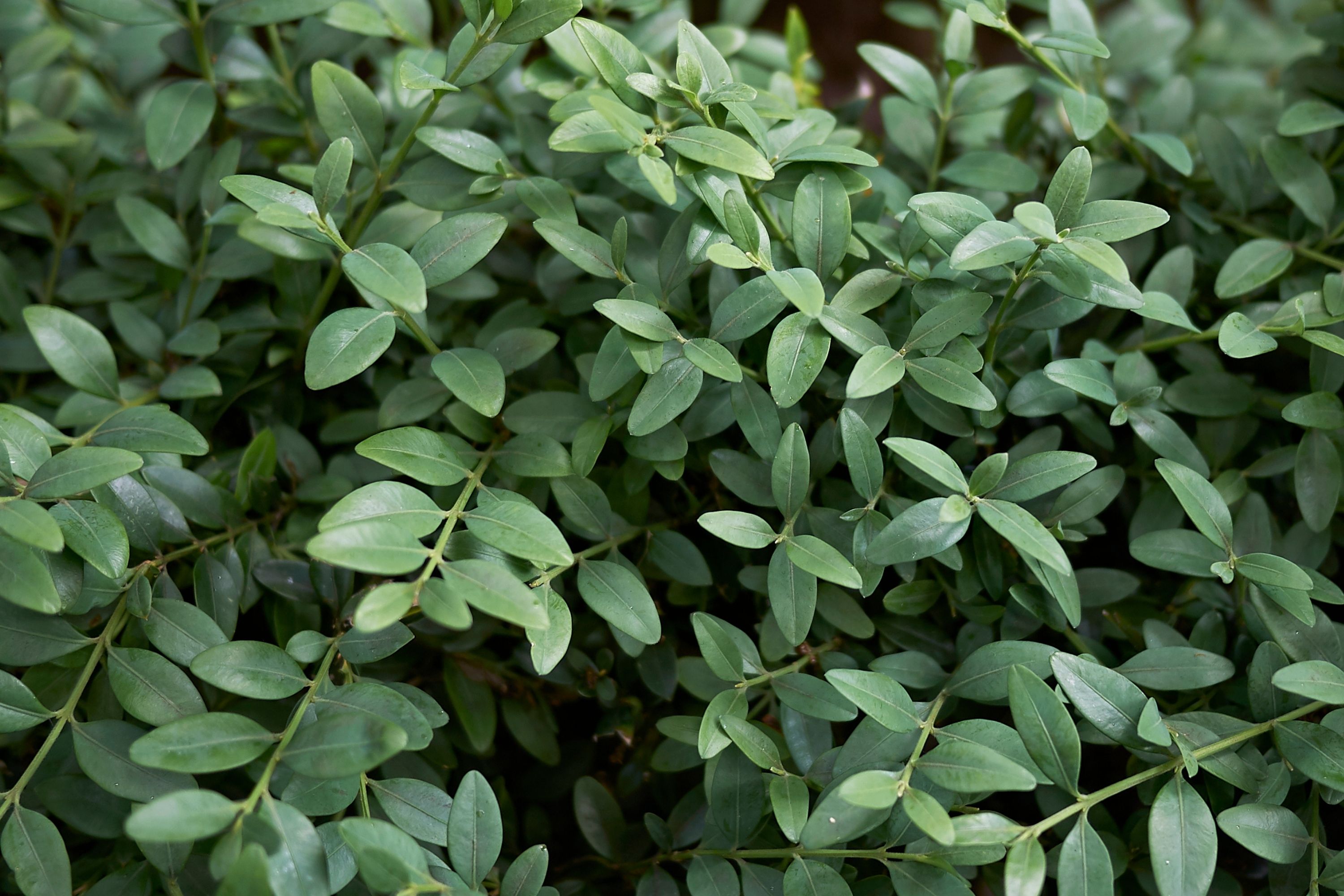Boxwood
(Buxus sempervirens)

Description
Buxus sempervirens, commonly known as common boxwood or European boxwood, is a versatile and popular evergreen shrub that has been cultivated for centuries for its ornamental, medicinal, and practical uses. In this article, we will explore the characteristics, history, cultivation, and uses of Buxus sempervirens in detail. Characteristics: Buxus sempervirens is a slow-growing shrub that can reach up to 4 meters (13 feet) in height and 2 meters (6.5 feet) in width. Its dense, compact, and rounded growth habit makes it an ideal choice for hedges, topiaries, borders, and container gardens. The leaves of Buxus sempervirens are glossy, dark green, and oval-shaped, measuring about 1-3 centimeters (0.4-1.2 inches) in length. The flowers are small, inconspicuous, and bloom in the spring. The fruit is a small capsule that contains 1-3 seeds. History: Buxus sempervirens is native to Europe, North Africa, and western Asia, where it grows in a variety of habitats, including woodlands, hillsides, and rocky slopes. It has been cultivated since ancient times for its ornamental and medicinal properties. In Greek mythology, the god Apollo crowned his son Asclepius, the god of healing, with a wreath made of boxwood. The ancient Egyptians used boxwood oil to embalm their dead. The Romans used boxwood for making combs, spoons, and other household items, as well as for hedging their gardens. During the Middle Ages, boxwood was prized for its medicinal properties, as it was believed to cure a variety of ailments, such as headaches, gout, and rheumatism. Cultivation: Buxus sempervirens is a hardy plant that is easy to grow and maintain. It prefers well-drained soil that is rich in organic matter, but it can tolerate a wide range of soil types, including sandy, loamy, and clay soils. It grows best in full sun to partial shade, but it can also tolerate shade. Buxus sempervirens is drought-tolerant once established, but it prefers to be watered regularly, especially during hot and dry weather. It is also tolerant of pruning and shaping, which makes it an ideal plant for topiaries and hedges. Uses: Buxus sempervirens has a wide range of uses, including: Ornamental: Buxus sempervirens is one of the most popular ornamental shrubs in the world, valued for its dense and compact growth habit, glossy foliage, and versatility in garden design. It can be used as a hedge, a topiary, a border, or a container plant. Its evergreen foliage provides year-round interest, and its small size makes it suitable for small gardens and urban spaces. Medicinal: Buxus sempervirens has been used in traditional medicine for centuries. Its leaves and bark contain alkaloids, flavonoids, and other compounds that have antispasmodic, diuretic, and anti-inflammatory properties. It has been used to treat a variety of ailments, such as headaches, gout, rheumatism, and urinary tract infections. Practical: Buxus sempervirens has been used for practical purposes for centuries. Its wood is hard, dense, and fine-grained, making it ideal for carving and woodworking. It has been used to make combs, spoons, chess pieces, and other household items. It is also a popular choice for hedging and topiary.
Taxonomic tree:







